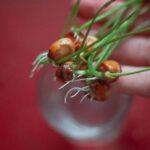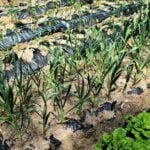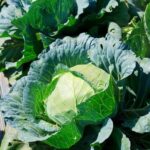Are you interested in starting a garden but don’t have a lot of space or access to a traditional garden plot? Look no further than gardening vegetables in pots.
This method of gardening allows you to grow your own fresh produce, even if you only have a small balcony or patio. In this article, we will explore the ins and outs of container vegetable gardening, from the benefits of growing vegetables in pots to selecting the right vegetables for this type of gardening.
Gardening vegetables in pots offers numerous benefits, making it an attractive option for both novice and experienced gardeners alike. Not only does it allow you to make the most of limited space, but it also provides greater control over soil quality, water drainage, and pest management. Furthermore, container gardening can be tailored to suit individual preferences and environmental conditions.
When it comes to choosing the right vegetables for container gardening, there are plenty of options to consider. Some vegetables thrive in containers, making them ideal for growing on patios or small outdoor spaces. By selecting the appropriate plants for your pots and containers, you can maximize your yield and enjoy a bountiful harvest without needing a traditional garden plot.
Benefits of Growing Vegetables in Pots
There are numerous benefits to be gained from gardening vegetables in pots. Whether you have a small outdoor space, limited sunlight, or poor soil quality, container gardening can be a great solution. Here are some of the key benefits of growing vegetables in pots:
1. Space-saving: Container gardening allows you to maximize your available space, making it possible to grow a variety of vegetables even in a small urban apartment or condo balcony.
2. Accessibility: Potted vegetable plants can be placed at convenient heights, reducing the need for bending and kneeling. This makes it easier for people with mobility issues or physical limitations to participate in gardening.
3. Pest control: Growing vegetables in pots can help minimize pest infestations, as containers can be moved around to avoid pests and protect vulnerable plants.
In addition to these benefits, container gardening also offers the flexibility of easily rearranging plants and experimenting with different vegetable varieties from season to season. Whether you’re new to gardening or an experienced green thumb, gardening vegetables in pots can be a rewarding and enjoyable way to grow your own fresh produce.
Choosing the Right Vegetables for Container Gardening
When it comes to gardening vegetables in pots, it is crucial to select the right vegetables that thrive in container gardening. Not all vegetables are well-suited for growing in pots, so choosing the appropriate varieties is essential for a successful harvest. Some of the best vegetables for container gardening include tomatoes, peppers, lettuce, spinach, radishes, green onions, and herbs like basil and parsley.
Tomatoes are one of the most popular choices for growing in pots due to their versatility and ability to adapt to container gardening. Cherry tomatoes and patio varieties are particularly well-suited for small spaces and can be grown in hanging baskets or larger containers. Peppers, both sweet and hot varieties, also do well in pots and can add a pop of color to your garden.
Lettuce and spinach are great options for those looking to grow leafy greens in limited space. These vegetables have shallow roots and can thrive in smaller pots.
Another excellent choice for container gardening is radishes – they grow quickly and don’t require deep containers. Green onions are easy to grow in pots and can be continually harvested by cutting the green tops as needed. Additionally, herbs like basil and parsley are ideal for potting due to their compact size and low maintenance requirements.
Overall, when selecting vegetables for container gardening, it’s essential to consider the available space, sunlight levels, and personal preferences. By choosing the right vegetables for your containers, you can maximize your harvest while enjoying fresh produce from your own home.
| Vegetable | Container Size |
|---|---|
| Tomatoes | 5-gallon pot or larger |
| Peppers | 3-gallon pot or larger |
| Lettuce/Spinach | 8-inch depth pot or more |
Selecting the Ideal Pots and Containers for Vegetable Gardening
When it comes to gardening vegetables in pots, selecting the right containers is crucial for the success of your plants. The ideal pots and containers for vegetable gardening should provide enough space for the plant’s roots to grow, proper drainage, and be made of durable materials. There are several options to choose from, including ceramic pots, plastic containers, wooden boxes, and fabric grow bags.
One important factor to consider when selecting pots for vegetable gardening is size. The container should be large enough to accommodate the specific vegetable plant’s root system. For example, larger plants like tomatoes and peppers will need a deeper and wider pot compared to smaller herbs or salad greens. Additionally, make sure the chosen pots have drainage holes at the bottom to prevent waterlogging, which can lead to root rot.
Another aspect to keep in mind is the material of the container. Plastic pots are lightweight and come in a variety of sizes but may not be as aesthetically pleasing as ceramic or terra cotta pots. Wooden boxes are a great option for creating a rustic look while providing good insulation for the roots during hot weather. Fabric grow bags are another popular choice as they are breathable and promote air pruning of the roots.
| Container Type | Advantages |
|---|---|
| Ceramic Pots | Attractive appearance; good insulation |
| Plastic Containers | Lightweight; available in various sizes |
| Wooden Boxes | Rustic look; good insulation |
| Fabric Grow Bags | Breathable; promote air pruning of roots |
Choosing the right pots and containers that meet the needs of your specific vegetable plants will contribute greatly to their growth and overall health. Taking into account factors such as size, material, and drainage will set you on the path to successful vegetable gardening in pots with bountiful harvests worth enjoying.
Essential Tools and Supplies for Successful Vegetable Gardening in Pots
When it comes to gardening vegetables in pots, having the right tools and supplies is essential for successful growth and harvest. Here are some of the must-have essentials for your container vegetable gardening:
- Quality potting mix: It is crucial to choose a well-draining potting mix that is specifically formulated for container gardening. This will provide the necessary nutrients and support for healthy vegetable growth.
- Appropriate pots or containers: Select pots that are large enough to accommodate the mature size of the vegetable plants. Ensure that the containers have proper drainage holes to prevent waterlogging.
- Gardening gloves and trowel: These basic tools will help you with planting, transplanting, and maintaining your potted vegetable garden.
- Watering can or hose with a gentle spray nozzle: Proper watering is crucial for container vegetable gardening, so having the right watering tools is essential.
In addition to these essential tools, there are also certain supplies that can aid in the success of your potted vegetable garden:
- Organic fertilizer: Consider using an organic fertilizer to provide essential nutrients to your potted vegetables without the use of synthetic chemicals.
- Mulch: Applying mulch on top of the soil can help retain moisture, suppress weed growth, and regulate soil temperature in your containers.
- Plant supports: Depending on the type of vegetables you are growing, you may need stakes or trellises to support their growth and prevent them from sprawling across your garden space.
By having these essential tools and supplies on hand, you will be well-equipped to embark on a successful journey of gardening vegetables in pots.
Proper Soil and Fertilizer for Potted Vegetable Plants
When it comes to gardening vegetables in pots, one of the most important factors to consider is the proper soil and fertilizer for your potted vegetable plants. The type of soil and the right fertilizer can make a significant difference in the success of your container gardening efforts, as they directly impact the growth and health of your vegetables.
Choosing the Right Soil
The first step in ensuring healthy potted vegetable plants is selecting the right soil. It’s essential to use a high-quality potting mix that is specifically formulated for container gardening. Look for a mix that is well-draining, lightweight, and rich in organic matter. Avoid using regular garden soil, as it can become compacted in containers, leading to poor drainage and stunted plant growth.
Applying Fertilizer
In addition to using suitable potting mix, providing your potted vegetable plants with the proper fertilization is crucial for their overall health and productivity. Since container-grown plants have limited access to nutrients compared to those grown in the ground, regular fertilization is necessary.
You can opt for organic or synthetic fertilizers specifically formulated for vegetables. Be sure to follow the application instructions on the fertilizer packaging and avoid overfeeding your plants, as this can lead to nutrient imbalances or burning of roots.
By paying careful attention to the type of soil used and providing appropriate fertilization, you can ensure that your potted vegetable plants have everything they need to thrive and produce a bountiful harvest. With these essential practices in place, you’ll be well on your way to enjoying a successful container gardening experience with an abundance of homegrown vegetables.
Watering and Maintenance Tips for Container Vegetable Gardening
Proper Watering Techniques
When it comes to gardening vegetables in pots, proper watering is crucial for the success of your plants. Container-grown vegetables can dry out more quickly than those grown in the ground, so it’s important to monitor the soil moisture regularly. The best way to determine if your potted vegetables need watering is to stick your finger into the soil.
If it feels dry at a depth of about an inch, it’s time to water. Be sure to water thoroughly, allowing the excess water to drain out of the bottom of the pot to avoid waterlogged roots.
Maintenance Tips for Healthy Plants
In addition to watering, container vegetable gardening requires some maintenance to keep plants healthy and thriving. Regularly inspect your plants for any signs of disease or pests. Remove dead leaves or any diseased parts of the plant to prevent further spread. Pruning and staking may also be necessary for certain vegetable varieties as they grow.
Managing Temperature and Sunlight
Container-grown vegetables are more susceptible to temperature fluctuations than those planted in the ground. During hot weather, consider moving your pots to a shadier spot or providing them with some protection from direct sunlight during the hottest hours of the day. In colder climates, you may need to bring potted plants indoors or provide them with some form of insulation during frosty nights.
With these watering and maintenance tips, you can ensure that your container vegetable gardening efforts yield a bountiful harvest of healthy and delicious produce.
Harvesting and Enjoying the Fruits of Your Container Gardening Efforts
In conclusion, gardening vegetables in pots can be a rewarding and satisfying experience for any individual, regardless of the size of their living space. Not only does it offer the convenience of having fresh produce at your fingertips, but it also provides a sense of accomplishment and connection to nature. By following the tips and guidelines outlined in this article, you can successfully grow a variety of vegetables in pots and enjoy the fruits of your labor.
One of the key benefits of growing vegetables in pots is the ability to control the environment in which they grow. This means you can ensure they receive the right amount of sunlight, water, and nutrients, leading to healthy and abundant yields. Additionally, container gardening allows for flexibility and creativity in arranging your vegetable plants, making it an ideal option for those with limited outdoor space or those looking to add greenery to their homes.
When it comes to harvesting your potted vegetables, it’s important to do so at the peak of ripeness to maximize flavor and nutritional content. Whether you’re picking tomatoes from a hanging basket or pulling up carrots from a deep container, savoring the taste of homegrown produce is truly incomparable. Overall, gardening vegetables in pots offers numerous advantages and rewards that make it a worthwhile endeavor for anyone interested in growing their own food.
Frequently Asked Questions
Which Vegetables Do Well in Pots?
Many vegetables thrive in pots, including tomatoes, peppers, lettuce, carrots, radishes, and herbs like basil and parsley. These veggies are well-suited for container gardening due to their compact size and ability to grow in confined spaces.
What Vegetables Can You Plant Together in Containers?
Certain vegetables can be planted together in containers based on their similar growing requirements. For example, you can plant lettuce with herbs like thyme or basil, or pair tomatoes with carrots and onions. This practice promotes efficient space utilization and helps the plants support each other’s growth.
How Deep Do Containers Need to Be to Grow Vegetables?
The depth of containers needed to grow vegetables depends on the specific vegetable being grown. Generally, small plants like lettuce or herbs require at least 6-8 inches of soil depth, while larger plants like tomatoes or peppers need about 12 inches or more to accommodate their extensive root systems. Adequate depth ensures proper root development and healthy plant growth.

If you’re looking to get into vegetable gardening, or are just looking for some tips on how to make your current garden better, then you’ve come to the right place! My name is Ethel and I have been gardening for years. In this blog, I’m going to share with you some of my best tips on how to create a successful vegetable garden.





